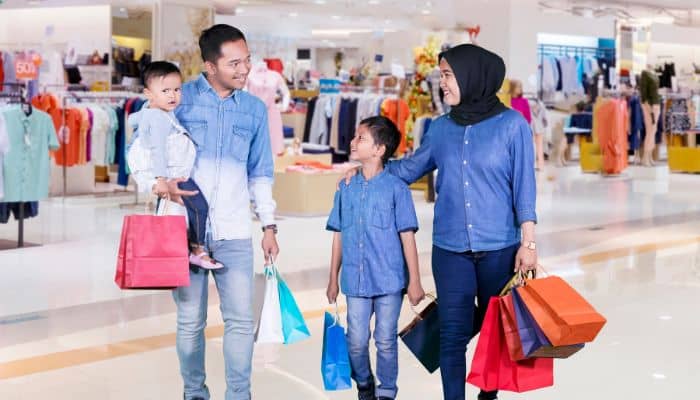Singapore – Mobile shopping is the preferred choice for consumers across Asia Pacific, yet many brands and retailers are failing to keep up, resulting in frustration with the user experience, according to a recent report by VML.
The report reveals that while physical retail is experiencing a resurgence in the West, consumers in Asia Pacific continue to favour online shopping. Globally, online spending dropped by 5% from 58% in 2023, indicating a shift towards more balanced shopping habits across both digital and physical environments, alongside a rising demand for in-person experiences.
However, the study found that in Asia Pacific, the decline in online shopping was far less pronounced, with only a 1% drop from 2023. The region continues to prioritise e-commerce, with India and China leading the way, where more than two-thirds of consumer spending still happens online.
As mobile shopping continues to dominate in APAC, consumers expect brands and retailers to adapt quickly. However, VML’s report revealed that many businesses have been slow to meet these expectations, resulting in frustrating user experiences across the region.
The report highlights that mobile devices have become the dominant shopping platform in Asia Pacific due to their affordability and accessibility, with 62% of consumers in the region now preferring to shop online via mobile.
Despite the strong consumer preference for mobile shopping, nearly half of APAC shoppers find the experience “difficult.” India faces the most challenges, with two-thirds of consumers reporting frustration with mobile shopping. The demand for improvement is clear, as 70% of APAC consumers believe brands and retailers need to significantly enhance their mobile shopping experiences.
Consumers are increasingly prioritising speed and convenience throughout their shopping journeys, with expectations for rapid delivery reaching new heights. According to the report, 29% of APAC consumers now expect their online orders to be delivered within two hours, reflecting a growing demand for near-instant gratification..
Research in the region further indicates that speed is particularly crucial for categories like pharmaceuticals and groceries, with nearly half of consumers expecting deliveries to be made in under two hours.
But speed goes beyond just delivery. According to the report, 70% of APAC consumers want a seamless, fast experience from product discovery to purchase, with Indonesia leading the way—where 80% of consumers expect a swift search-to-buy process.
With this, AI is also increasingly getting recognised for its potential to enhance efficiency and free up time. In Asia, optimism about AI’s future is strong, with 68% of consumers believing its benefits outweigh its drawbacks. However, the ANZ region is more cautious than its Asian counterparts. Nearly half of consumers in Asia are open to allowing AI to handle their shopping and organise their lives, reflecting a strong belief in AI’s potential to improve daily routines.
Meanwhile, the report also indicates that marketplaces like Amazon, Shopee, Tmall, and Lazada continue to dominate as the primary destinations for product discovery, contributing to 32% of consumer inspiration across the region. Notably, China leads the APAC market, with 63% of consumers using these platforms to browse for ideas. However, despite being the top choice for inspiration, their influence on actual purchasing appears to be waning, with marketplace spending in the region declining from 37% in 2023 to 28% in 2024.
Consumers are increasingly open to alternative purchasing channels, particularly as D2C investments rise in super apps like WeChat and Line. Interestingly, over half of APAC consumers express willingness to use a dating app developed by marketplaces such as Amazon, Tmall, and Lazada, showcasing their capacity for innovation and growth.
Moreover, social commerce is gaining significant global traction, with the Asia Pacific region setting the standard. An impressive 81% of consumers in this region have made purchases through social media, highlighting its widespread appeal.
TikTok Shops (or Douyin in China) dominate the social commerce landscape in China, Thailand, and Indonesia, with one in two consumers indicating they are most likely to make purchases on the platform. In contrast, in India, where TikTok is banned, Instagram has emerged as the leading platform, with over a third of consumers expressing a likelihood to transact there.
The study also revealed that Asian consumers are embracing live stream shopping, with 82% reporting that they have made purchases through this medium. In contrast, Australia and New Zealand lag behind, with just under one-third of consumers having participated in social live shopping events.
Nick Pan, chief commerce officer at VML APAC, shared, “The East skipped the desktop, leaping straight to mobile-first commerce, and Western businesses need to catch up. For consumers in the East, social platforms are the internet, making social commerce seamless and frictionless. The reach of social commerce alongside the immediacy of purchase are just two of the reasons why it should be right at the top of the agenda for consumer brands—especially for global brands wanting to expand to Asia.”
VML’s report highlights the evolving definition of “consumer” as digital avatars become increasingly significant. Emerging technologies and channels are facilitating interactions that extend beyond the physical realm.
The lines between physical and digital consumers are increasingly blurred, as evidenced by the rise of gaming commerce. An impressive 91% of APAC consumers identify as “gamers,” with 70% of them spending money on in-game purchases. Notably, over half of APAC gamers feel that looking good in-game is just as important as looking good in real life.
Interestingly, blended realities even extend to the afterlife, with over half of APAC consumers showing interest in “post-death consumerism.” Thailand leads the way, with three-quarters wanting to participate. Additionally, 54% of consumers in the region are interested in using AI to engage in virtual conversations with deceased loved ones.
Beth Ann Kaminkow, global chief commerce office at VML, said, “The new era of consumers is upon us. Demanding to be at the centre of their own immersive omnichannel universe, brands and retailers are still playing catch-up on the new rules of commerce. Through this report, VML continuously seeks to better understand our future shoppers—uncovering what drives them to discover, engage, and ultimately, purchase—to help marketers redefine how they drive brands and businesses.”
Aadit Bimbhet, regional commerce director at VML APAC, added, “While the West sees a resurgence in physical retail, Asia Pacific reminds us that the future is still digitally driven. Global businesses can learn from the region’s mobile-first mindset, its embrace of social commerce, and its openness to AI-powered shopping. To win in APAC and increasingly globally, brands must prioritise seamless digital experiences, hyper-personalised engagement, and lightning-fast fulfilment.”










